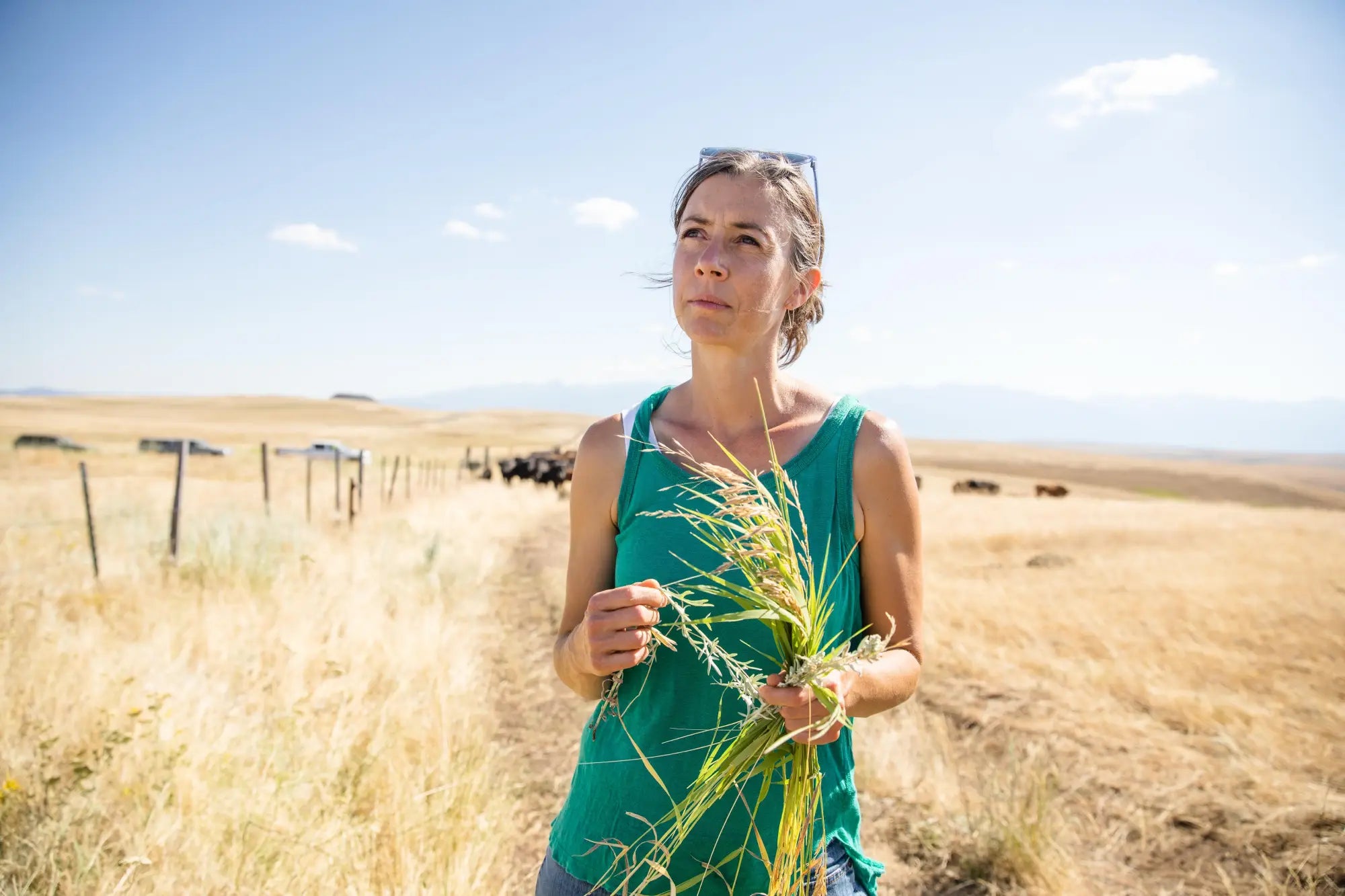Meet Cory Carman, Lineage Ranching Partner
Cory Carman is a 4th generation rancher and next-generation thinker, who returned to her family’ s ranch in 2003 after earning a degree in Environmental Policy from Stanford University. A brief stint on Capitol Hill led Cory to reimagine and restructure Carman Ranch, located in Oregon. By transforming it to address modern needs and demands through a focus on holistic regenerative agricultural practices and animal welfare, the ranch now grows deeply nutritious food and contributes to sustainable communities. We’re proud to partner with Cory and work with her to source inputs for our 100% Grass-Fed Beef Tallow and 100% Grass-Fed Air Dried Steak.
Q&A with Cory Carman
Your Story and Partnership with Lineage
1. You left ranching once — what brought you back, and why grass-fed beef?
My commitment to my community is deep and unwavering. I was raised by this land and these people, who gave me everything I needed to venture out into the world. I have always known that my life’s work would be to repay that debt by paying forward what was given me.
When I left, I thought public policy would be my path to giving back. I returned when I realized that policy was a long road to change and–at that point–I didn’t know enough to contribute to that conversation in any meaningful way, And my family needed my help.
Today I know that we can learn everything we need to know about being good humans by paying attention to the land. I’ve also learned that the quality of the relationships in one’s life determines the quality of everything else. In ranching, the relationships are between the people and the land, the animals and the land. Grassfed beef is the product that emerges from those overlapping, connected relationships. The more nourishing the relationship is for the plants and animals, the more delicious the beef.
2. How does partnering with Lineage impact your ranch, your animals, and your ability to keep stewarding the land?
As a values-aligned company dedicated to helping people feel better, Lineage is a great megaphone for all producers like Carman Ranch. Understanding what promotes true and lasting health in this day and age is complex. We love working with a company that deeply understands the benefits of our work, and with people who share the immense satisfaction that one gets from imagining that your efforts are contributing to other people’s health and well-being.
Companies like Lineage, and leaders like Paul and Anthony, who’ve dedicated their lives to researching and explaining what true health looks like are invaluable to all regenerative livestock producers. On top of that, Lineage purchases products that support our mission to utilize the whole animal, while paying an honest price, purchasing in volume and selecting cuts that are meaningful to our bottom line. Those actions help stabilize our business while allowing us to imagine how we can expand our impact.
3. For customers who’ve ordered our tallow since August 2024, it’s come from your ranch which is so exciting! What should they know about that tallow, and why is it so special?
It’s such a cool product! Before connecting with Lineage, I played around with making my own tallow and it’s pretty challenging to get the viscosity exactly right… not to mention it’s a lot of work! Lineage has mastered and scaled the process to come up with a product that’s better than what I can make myself.
I use tallow to cook everything—beef, of course, but it’s great for sauteeing vegetables. It has a super high smoke point, so it doesn’t impart a burnt or rancid flavor like even the best oils can. Plus it’s also loaded with healthy fats and vitamins that our bodies are designed to absorb and I feel good after eating it. I’m really grateful not only for the partnership, but because I love the product!

Tallow
100% Grass-Fed Beef Tallow
Regenerative Farming & Why It Matters
4. You’ve said “no one quite agrees on what regenerative means” so in your own words, what is regenerative farming?
For me, regenerative agriculture is less a check list of practices than a philosophy and mindset used by land managers to shift their goals and decision-making. It’s about continually improving the health of the land rather than extracting from it. The core principles of soil health provide a shared foundation for practitioners of regenerative agriculture, but they are only the beginning.
The real journey is deeply personal and unique to each parcel of land and its steward. It is informed by daily acts: observing what’s happening on the ground, uncovering the history of the land, imagining its future, experimenting with the tools and resources at hand, talking to and learning from other stewards and scientists. It is work that requires consideration and courage, and an openness to failure. The science of regenerative agriculture gives us the principles; the art lies in how each steward interprets and applies them in relationship with their land.
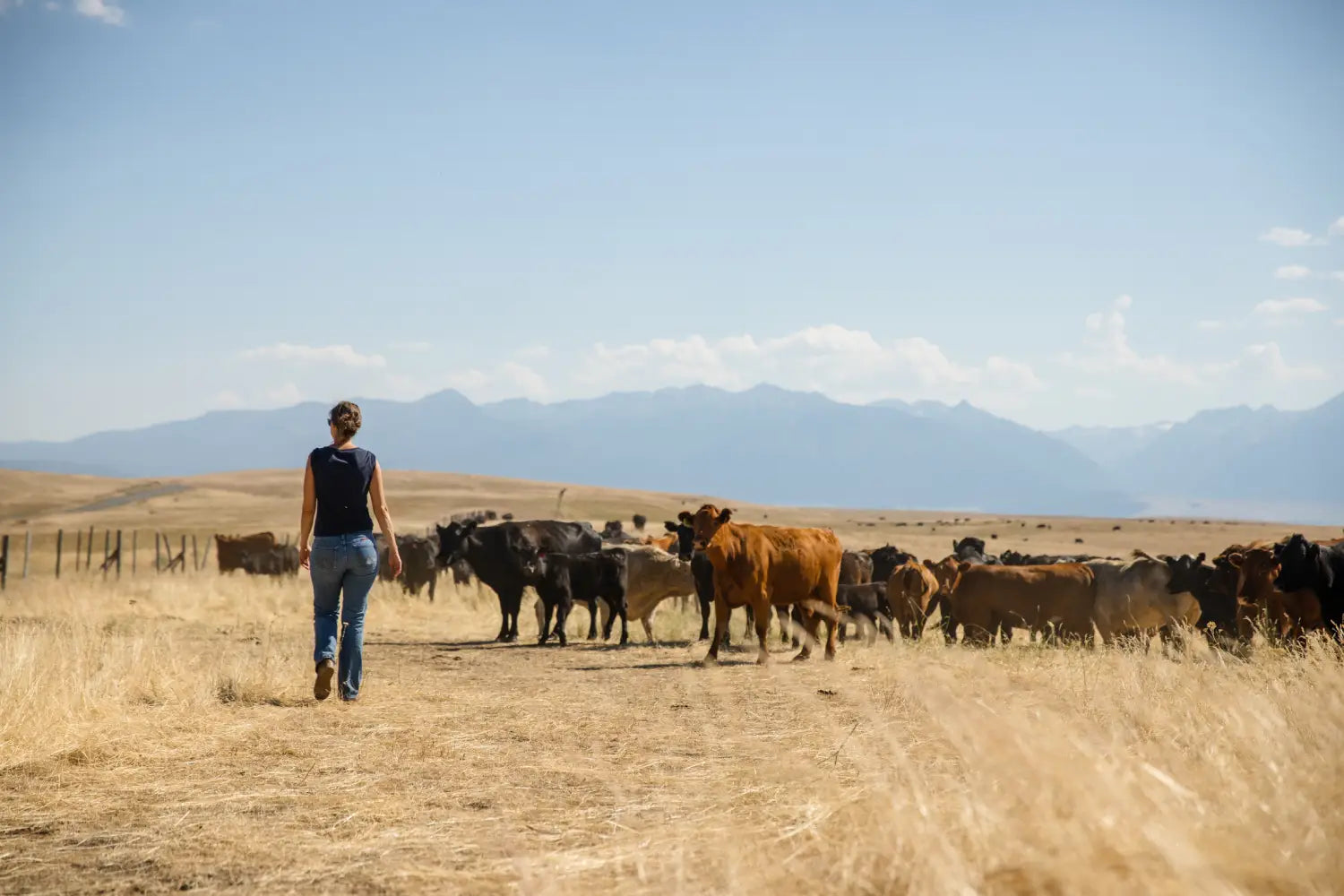
5. Why should every person who eats food care about regenerative farming?
In a world full of challenges that overwhelm us and where the future feels uncertain, bright spots are rare. Regenerative agriculture is a true bright spot that, when applied across hundreds of thousands of acres, has the power to restore ecology, address climate change, revitalize rural communities, increase biodiversity and improve the health of both farmers and animals.
Beyond these profound benefits to the public at large, there are equally important personal reasons to embrace regenerative agriculture: healthy soil produces more nutrient-dense food, which we know can be transformational to human health. As soils have been depleted and diverse ecosystems have been replaced with monocultures over the last century, our diets have shifted. As a culture, we’re overfed but undernourished, consuming more calories and receiving fewer nutrients from food with less flavor.
Rebuilding soil health reverses that loss. Food grown in healthy soil delivers more than nutrients and rich flavor. It restores phytochemicals, the compounds that support detoxification, reduce inflammation, strengthen gut health, balance hormones, and restore vitality not just to the land but to our bodies.
6. What’s the difference between a regenerative farm and a conventional one that most people would never see or think about?
I have great respect for conventional farmers, many of whom are remarkable people doing their best under tough conditions, often also burdened by debt and constrained by market pressures. Yet when a farm shifts toward regeneration, the visible changes are striking.
On first glance, regenerative farms can look “messier.” Biodiversity doesn’t resemble neat monocultures, and the quest for healthy soil comes with weeds that signal what the soil needs.
Water is another telling marker: Healthy soil, rich with carbon and robust fungal life absorbs rain, storing it for future use. By contrast, compacted or dead soil sheds water, leaving puddles on top that take days to absorb. That’s why we track water infiltration as part of our monitoring regime. Few measures reveal the health of soil more clearly than how it handles a rainstorm.
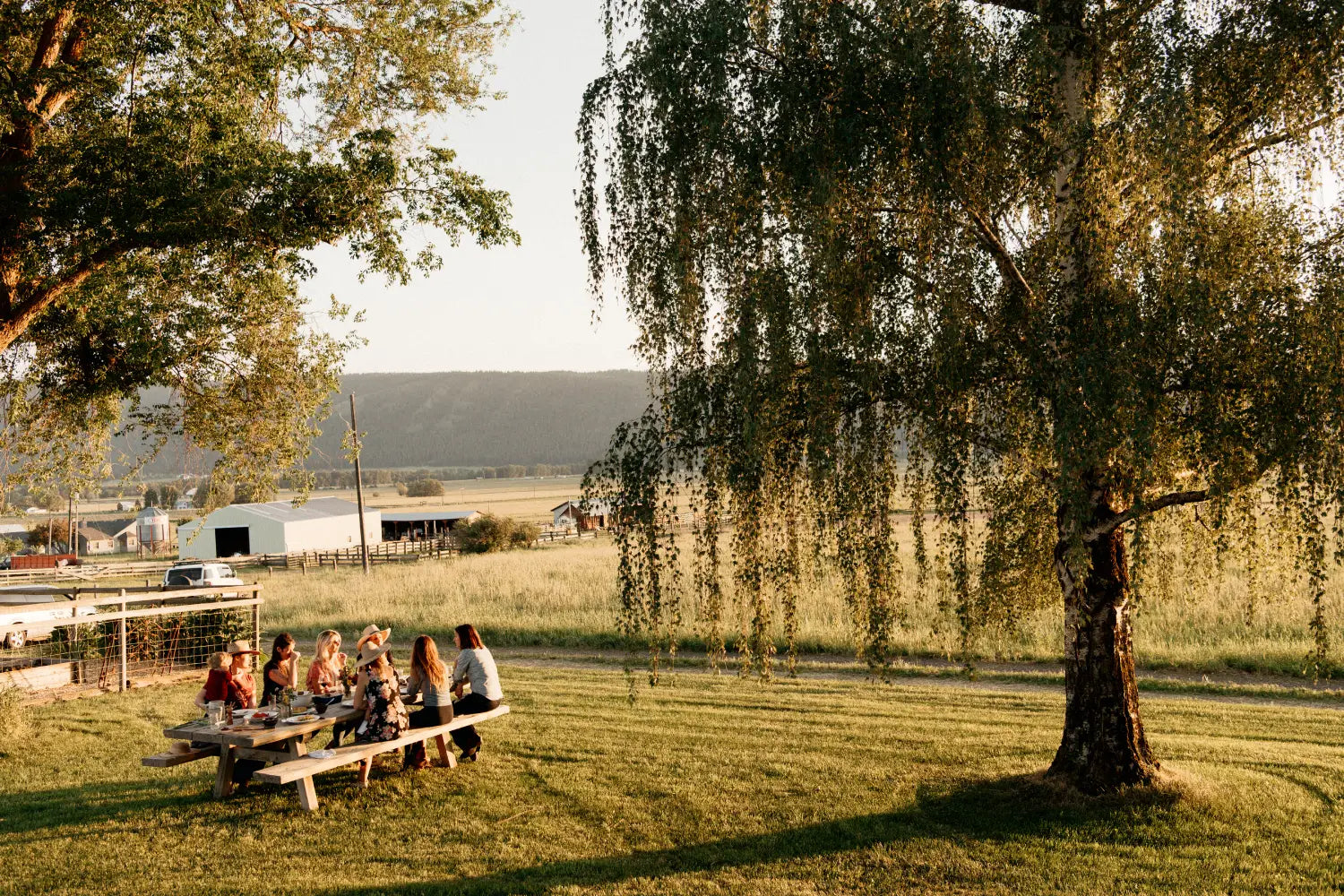
7. What’s one thing most people get wrong about how our food is grown or raised?
Many people see abundance when they walk into a grocery store. But the reality is that most of what they see comes from the industrialized farming system, which means that it’s probably contributing in some way to soil degradation.
It is much more difficult to find nourishing, nutrient-dense food than it should be. Our culture is fixated on cheap food, demanded by people who refuse to pay “too much” for food, but who drive luxury cars, live in beautiful homes and spend money on luxury goods. The “cheap” price of food hides real, measurable costs like depleted soil, polluted water, stressed animals, and stressed farmers, struggling rural communities and our overall health.
Complaining about the price of food is a cultural practice I would like to see people question more often and more urgently. Food access is incredibly important, but I believe that the best way to achieve access is to normalize regenerative practices and expect the outcomes of those practices (like human health) to be the baseline. That journey must begin with us collectively questioning what we’re willing to pay for.
8. You’ve said that our agricultural system is in “debt” in much of the U.S. What does that mean, and why is it a problem for human health?
We’ve built an incredibly productive food system, but we did it by extracting from the land. Year after year, we stripped away soil life, producing food with less nutrition and landscapes with less resilience. In a very real sense, we are now "in debt” to that land. Somehow we must reinvest, in soil health, in ecological function, in biodiversity and water-holding capacity. The return on this investment would yield immeasurable dividends in cost savings and greater well-being.
I sometimes borrow the language of finance to describe the current reality, because the financial system has–in my opinion–played a central role in driving us here. Farmers are asked to own land to secure their livelihoods, to purchase costly equipment, and to pay interest on all of that capital. They’re expected to repay operating loans each year–with interest–while meeting financial metrics that have nothing to do with ecology, resilience or the kind of prosperity that is only achieved through long term investment.
What if our system measured wealth differently? What if the “returns” included land health, human health and biodiversity? That kind of freedom would give farmers the ability to see their work not just as growing food, but as cultivating value for future generations.
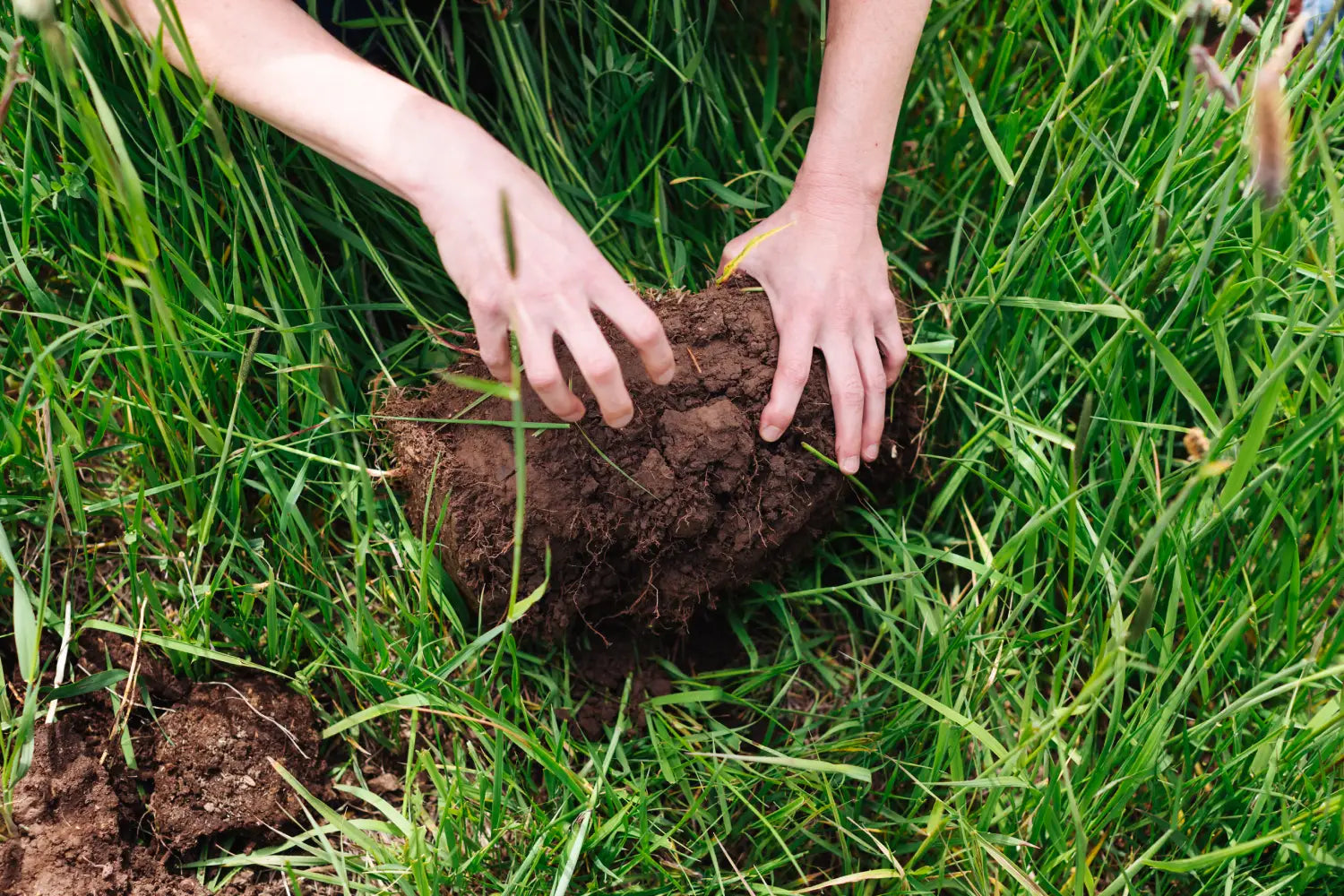
9. If someone lives in a city or far from farms, how can they support or connect to regenerative agriculture in a real, tangible way?
You can support regenerative agriculture in meaningful ways, even if you live in a city or far from farms. Start small. Find the closest connection you can—maybe it’s a farmers’ market, a CSA, or committing to buy one item regularly from a regenerative farm or ranch. Choose farmers you can actually talk to, and learn directly about their practices.
Eat from your region whenever possible, to keep your food dollars circulating in nearby communities. Connect with your local food community at farmers markets, co-ops, food hubs.
A regenerative mindset isn’t defined by your purchases, but by curiosity and reciprocity: figuring out how to give back, and how to build health for your family, your community and your region. That might look like anything from composting food scraps to supporting local policy that invests in soil and water health. Every choice counts toward strengthening the connection between people and land.
Beyond your immediate region, look for companies that source directly from regenerative farms. Don’t stop at labels—dig deeper. Read the stories behind the food. If you see real farmers, real places, and real practices (rather than vague buzzwords), you’re on the right path.
Animals, Nutrition & the Land
10. How does what your animals eat — and how long they live on pasture — change the flavor and nutrition of the meat on someone’s plat
The wine world has introduced people to the concept of terroir, or the way a specific place (soil) imparts distinct characteristics to the flavor of the food it has nourished. The same principle applies in all foods, but it is especially pronounced in foods with concentrated mineralization, such as wine, and meat.
The beef from our cattle is, in effect, an amalgam of the hundreds of different grasses, forbs, legumes and plant compounds they consume over their lifetime. The compounds in a diverse pasture contribute a wide spectrum of phytochemicals and micronutrients, which influence both animal and human health, and the depth and complexity of flavor of the meat. Some of the producers we work with, who graze their cattle on a similar combination of plants, point to comparable flavors in their beef, and yet they are distinct, and different from the beef I grew up eating.
Our experience confirms this. In blind tastings with award-winning chefs whose palates can detect subtle differences in flavor, the variations between grassfed beef from different regenerative farms were consistently perceptible. While all of the beef was delicious, and of high quality, regional differences in plant diversity translated into measurable differences in taste.
Nutritional analysis further supports these observations. Testing has shown that cattle raised on highly diverse pastures carry significantly higher levels of health-promoting compounds in their meat, beginning when they are very young. Simply put: greater plant diversity in pasture systems not only enhances ecological health, but results in healthier beef that is demonstrably distinct in flavor.
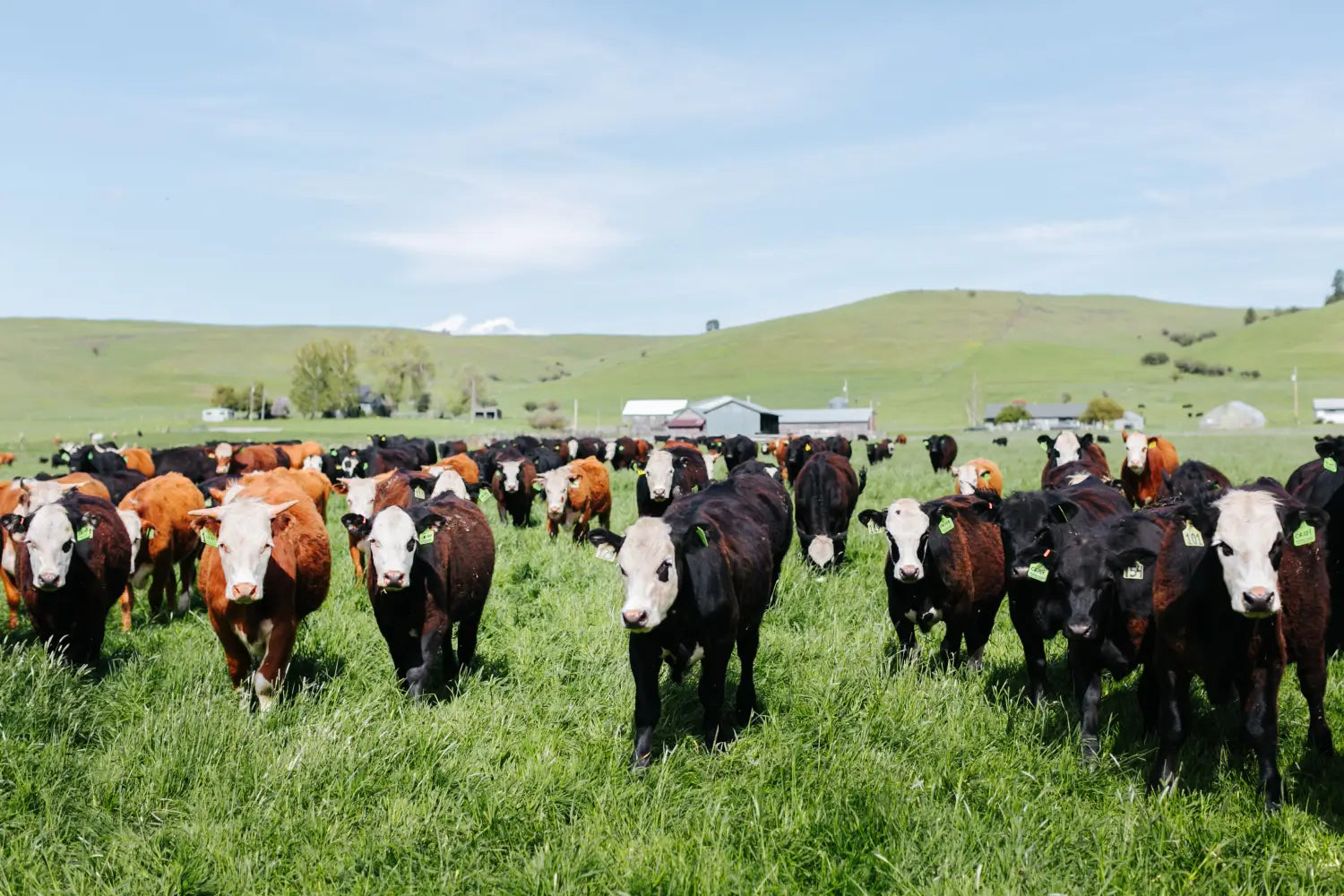
11. What are the ripple effects on the land when livestock is raised regeneratively versus conventionally?
We were conventional ranchers when I was growing up, focused on the health of the cow. That meant grazing pastures in such a way that labor was minimized and bringing outside feed and supplements in to make the herd healthier. Today our focus is on soil health, and we use the cows to improve the health of the land, so that they in turn can be healthier.
Soil is the most important building block for plant health, animal health and, ultimately, human health. Yet the approach is rarely straightforward, since the health of soil usually results from the relationship between the animals and the land. Grasslands like ours, which evolved with grazing animals, rely on the “disturbance” that cattle bring to the plants. Of even greater importance is allowing adequate rest for those plants to recover after the disturbance.
Today, our grazing plans maximize the rest period for each pasture and, ideally, also maximize disturbance. Disturbance is what cattle in concentrated numbers do with their hooves, breaking up the surface of the soil, adding fertilizer with their manure and clipping the grass to stimulate more growth. When the grass plants recover, they are healthier and more vigorous, which makes better wildlife habitat for deer and elk, birds and insects.
We do our best to understand and contribute to healthy ecological processes on our ranch. When our practices were more conventional, we focused on our cattle’s performance. Rather than selecting cattle that performed well on our land, we selected cattle best suited to “perform” for the conventional market , and then supplemented those cattle with outside inputs. At the time, that was considered the best practice. But as we’ve moved to a greater understanding of what’s possible when ranching in collaboration with a healthy ecology, the work has become more interesting and engaging, despite also sometimes being immensely challenging!
12. What’s one thing you do to make sure your animals are treated humanely that people might not expect?
I’m not entirely sure what people expect, but here are a few things that might not occur to them: We spend time with our cows. We move them and check on them frequently, we walk through them. Each time we interact with them, we’re training the cows about what to expect from us; our presence, because it is regular, should not be stressful. That frequent interaction also allows us to observe their health and to catch issues or irregularities early.
The other thing we do that may be surprising is we move slowly. It’s fun to run and chase animals on horseback, but it’s not very effective. The most productive herding is often very slow. It’s about applying gentle pressure until an animal moves in the right direction and then, as long as they’re doing what you want, doing nothing. It’s actually a really good metaphor for parenting: Make it uncomfortable until there’s movement in the right direction, and then leave them alone!
Questions about animal welfare often focus on slaughter, for good reason. Ensuring that our animals are harvested thoughtfully and humanely, without suffering, is central to what we do. But I believe that emphasis sometimes reflects our own discomfort with death. Unlike humans, cattle don’t dwell on mortality. Their lives are measured in days and years, and what truly defines their well-being is the quality of that time: the nourishment they receive, their ability to socialize naturally, their resilience against illness and access to treatment when they are injured. Like people, animals experience stress differently, and much of that stress comes from the unfamiliar. Our role is to minimize and manage those disruptions, in ways that keep stressful events rare and brief.
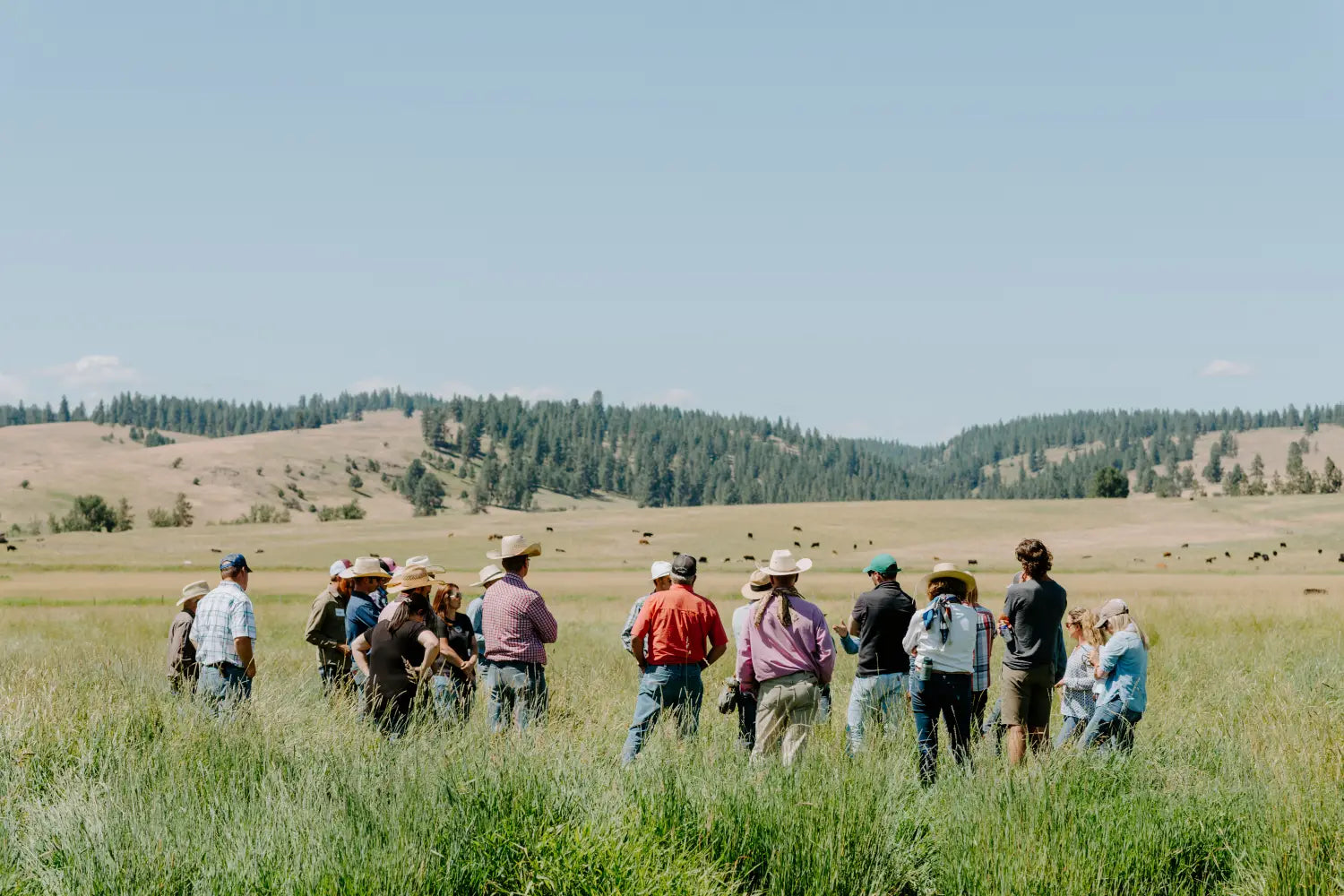
If you have questions about this piece, please email us at hello@lineageprovisions.com.
